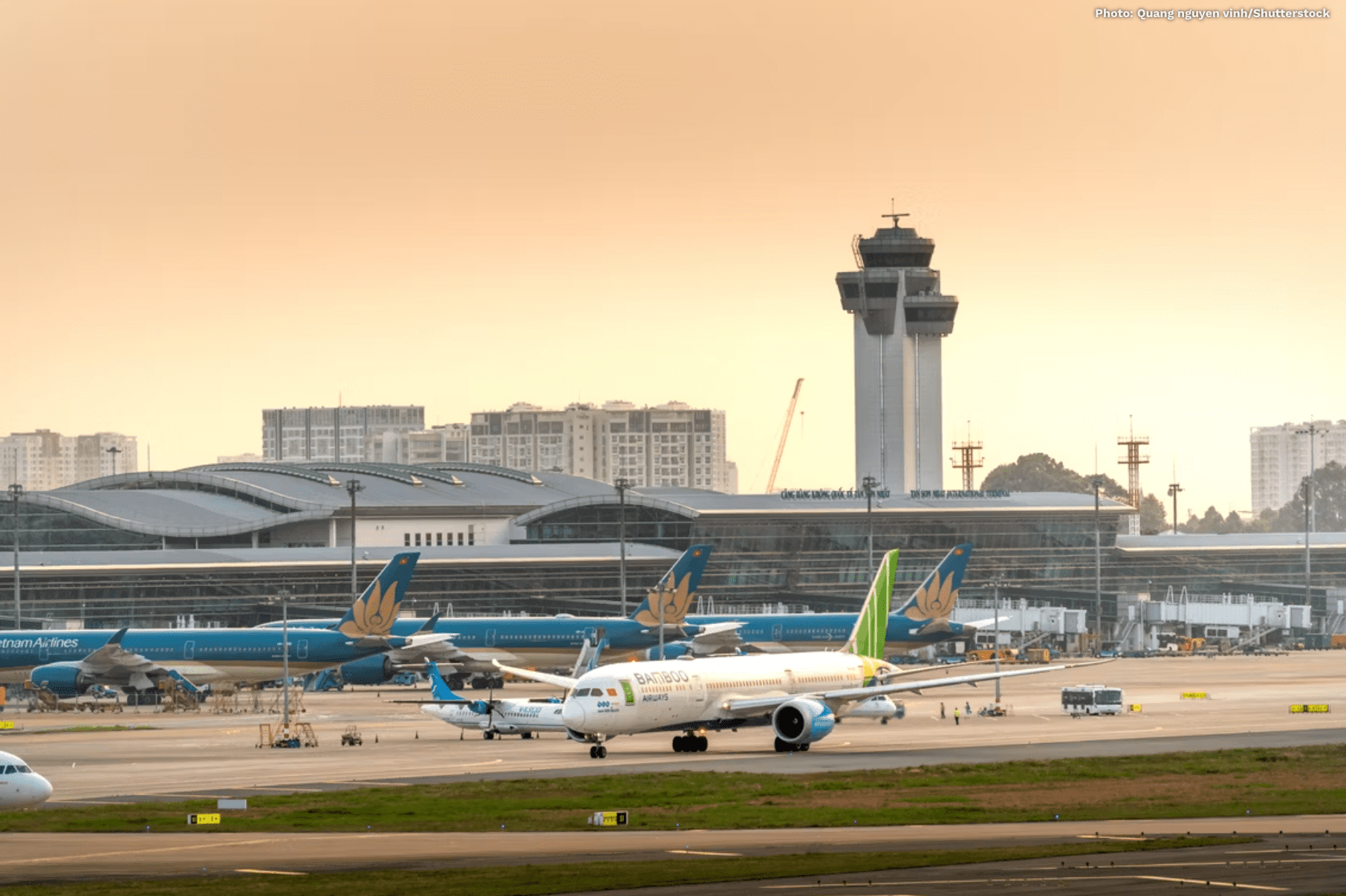Vietnam’s capital, Hanoi, may soon have a second international airport.

Vietnam’s population has been growing rapidly in recent years, at a steady rate of 1 million people per year, and is expected to exceed 100 million by 2023. Of these, more than nine million live in Ho Chi Minh City alone, Vietnam’s most populous city, which continues to grow year after year.
Similarly, the Hanoi metropolitan area, Vietnam’s capital, will reach five million residents in 2023, an increase of 3.67% from 2022. According to the capital’s government, the city’s population will triple to about 21-23 million by 2050, with a total area of 24,314 square kilometers, similar to that of Ho Chi Minh City (about 24-25 million projected in 2050).
Congestion at Hanoi airport
The current Noi Bai International Airport in the Vietnamese capital was designed to handle 25 million passengers annually. However, since 2017, the number of transit passengers and cargo has exceeded the capacity limit every year, increasing by 10% year-on-year until 2020, due to the pandemic. However, following the lifting of strict travel restrictions, global air passenger traffic is expected to exceed pre-pandemic levels this October, despite a slower recovery in the Asia-Pacific region.

Photo: Huy Thoai/Shutterstock
The capital’s airport will therefore be congested again by the end of the year. The construction of a new airport to support and relieve the existing one is therefore of paramount importance.
Vietnam Airport System Development Plan
The population boom, currently underway and expected to continue for the next several years, has convinced Vietnamese authorities to seek central government approval for a plan to build another international airport for the capital region, in addition to the one currently operating in Noi Bai. However, it is rumored that the second Hanoi airport will be listed as domestic rather than international in the report submitted to the Vietnamese Prime Minister’s Ministry.
Authorities have already identified a number of locations for the second airport, including Ly Nhan District in Ha Nam Province, about 60 kilometers from Hanoi; the southern district of Ung Hoa, 40 kilometers from the center; Thach Mien District in Hai Duong Province, about 50 kilometers from Hanoi; or Tien Lang District in Hai Phong City, about 120 kilometers from the capital.
The primary objective is to increase the capacity of the air traffic to the capital to handle 130 to 150 million passengers per year by 2050, in order to meet expected domestic and international demand in the coming years. This project would be included in Vietnam’s overall airport system development plan for the period 2021-2030, looking ahead to 2050.

Photo: Vietnam Stock Images/Shutterstock
The plan for the development of Vietnam’s national airport system includes not only the expansion of the capital’s airports, but also the inclusion of two international airports for the Ho Chi Minh City area, namely Tan Son Nhat and Long Thanh International Airports.
Very optimistic forecast
The Civil Aviation Administration of Vietnam (CAAV) predicts that the aviation sector will fully recover from COVID by the end of 2023. Moreover, in most of Asia, ‘domestic’ aviation has managed to weather the pandemic-related restrictions that have hit only international travel. CAAV predicts that 34 million Vietnamese passengers will travel abroad in 2023, a volume that has tripled since last year.
Vietnam has 28 airports, 14 of which have international flights, and even the national carrier, Vietnam Airlines, recently announced plans to increase the frequency of its international flights to Melbourne (MEL) and London Heathrow (LHR).

Photo: Minh K Tran | Shutterstock
One thing is for sure: if the government accepts the proposal, the situation will not be resolved overnight. It will take years for the airport to be built, prepared, and approved for operation. But the sooner construction starts, the sooner it will be completed.
Source: Simple Flying

Warning: Illegal string offset 'cookies' in /home/u623323914/domains/eng.bayviet.com.vn/public_html/wp-includes/comment-template.php on line 2564